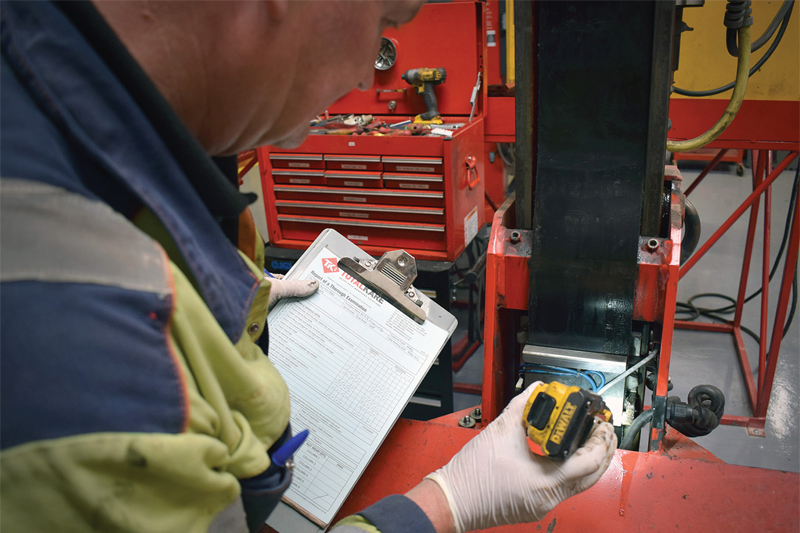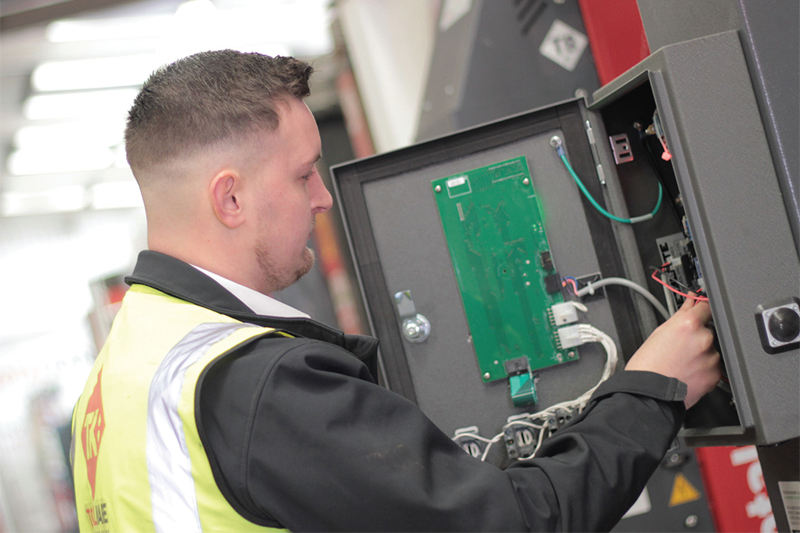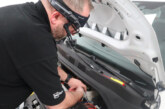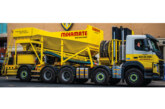
Jack Whitehouse, Technical Supervisor at TotalKare, explores the importance of keeping your vehicle lifts in good condition.
Workshops are very busy places, with technicians under increasing pressure to make sure vehicles are back on the road as soon as possible. Quite simply, the longer they are out of action, the more money the customer or end user loses. Not only will you be letting people down, but the repercussions, whether financial or reputational, can be severe.
To this extent, heavy-duty lifting equipment is a key component in making sure the workshop is as efficient as possible.
So, how can you ensure your vehicle lifts are maintained and have a long life? There are a number of things a technician can do, such as taking into account the growing need to use experts in order to ensure the effectiveness of servicing and compliance with insurers and health and safety legislation. There are also some simple user errors that can be eradicated that will prolong the life of your vehicle lift
Keep your house in order
The complexity of vehicle lifts and stringent legislation means that the preferred route for most operators is to outsource their servicing and maintenance options. For example, over the past 12 months, TotalKare has seen a 20% increase in the number of long-term contracts that it looks after.
Technicians can implement safe systems of work in order to avoid costly wear, tear and breakdowns to their vehicle lifts. This is the process of ensuring the safe operation of the lifts at all times.
For starters, there’s a pre-use check that should be completed, which is looking for any visual damage or excessive wear on any part of the lift. The condition of the cables should also be checked, as they often take the brunt of heavy vehicles continually running over them.
Most workshops, with a single vehicle entrance, work best with the lifts set-up in a u-shape, preventing the need to keep unplugging and moving interconnected cables, and stopping people from accidentally running over them.
Common errors to avoid
As previously mentioned, there are some basic errors that can be made unintentionally, perhaps due to workload and the intense nature of workshops.
When it comes to spotting issues with the lifts before they become an even bigger problem, implementing a good working culture, training, and safe systems of work into the everyday approach is very important.

One of the most common causes of damage and wear to mobile column lifts is the issue of side loading. This is where the vehicle is lifted with the parking/handbrake still on, which prevents it from centralising, resulting in the carriage often being kicked to one side.
If this is done regularly, you will find that the rollers will have uneven wear on one side and will need replacing a lot sooner than expected. Depending on the extent of the misuse, it can also cause wear and damage to the mast.
Outsourcing is the best option
The best way to make sure your vehicle lifts are operating effectively is to outsource your servicing to an expert provider.
Whilst adopting safe working systems and keeping the products clean always helps, outsourcing will enable you to make sure that you meet health and safety legislation and stay abreast of new technical developments.
It will also help with insurance, as the repair and maintenance work, and corresponding paperwork will be completed by an approved expert.
As a standard, TotalKare recommends two services per year, depending on usage and environmental considerations.
One of the most crucial aspects covered in TotalKare’s services is the load nut wear measurement on some of the older electro screw types of lift – the newer models will have equivalent hydraulic seal checks.
Also covered for damage or wear are weld and fabrication, electrical cables and bearing checks, whilst the company also monitors signs of correct greasing procedures being carried out as per the manufacturer’s specification.
Anything classed as a service item that has worn out is changed to avoid future breakdowns, which is the whole point of having preventative maintenance/servicing in the first place.
A Report of Thorough Examination must be completed every year to keep in line with LOLER regulations and legal requirements. These involve a full audit that highlights immediate action and advisories for work that need to be carried out. It’s similar to cars going through an annual MOT, and should be viewed with the same level of importance.
Vehicle lifts are an integral part of the workshop. Good housekeeping, effective servicing and regular maintenance will ensure they continue to operate, and will enable companies to avoid the costly pitfalls of downtime and breakdowns.








